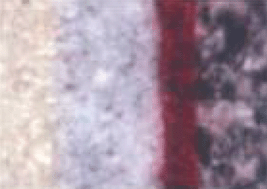Capabilities of laser ablation—inductively coupled plasma mass spectrometry for (trace) element analysis of car paints for forensic purposes
Abstract
The capabilities of

* Corresponding authors
a
Laboratory of Analytical Chemistry, Ghent University, Institute for Nuclear Sciences, Proeftuinstraat 86, B-9000 Ghent, Belgium
E-mail:
Frank.Vanhaecke@UGent.be
b Laboratory for Inorganic Chemistry, ETH Hönggerberg, HCI, CH-8093 Zürich, Switzerland
c National Institute for Criminology and Criminalistics NICC, Vilvoordse Steenweg 98/100, B-1120 Brussels, Belgium
The capabilities of

 Please wait while we load your content...
Something went wrong. Try again?
Please wait while we load your content...
Something went wrong. Try again?
I. Deconinck, C. Latkoczy, D. Günther, F. Govaert and F. Vanhaecke, J. Anal. At. Spectrom., 2006, 21, 279 DOI: 10.1039/B514007B
To request permission to reproduce material from this article, please go to the Copyright Clearance Center request page.
If you are an author contributing to an RSC publication, you do not need to request permission provided correct acknowledgement is given.
If you are the author of this article, you do not need to request permission to reproduce figures and diagrams provided correct acknowledgement is given. If you want to reproduce the whole article in a third-party publication (excluding your thesis/dissertation for which permission is not required) please go to the Copyright Clearance Center request page.
Read more about how to correctly acknowledge RSC content.
 Fetching data from CrossRef.
Fetching data from CrossRef.
This may take some time to load.
Loading related content
